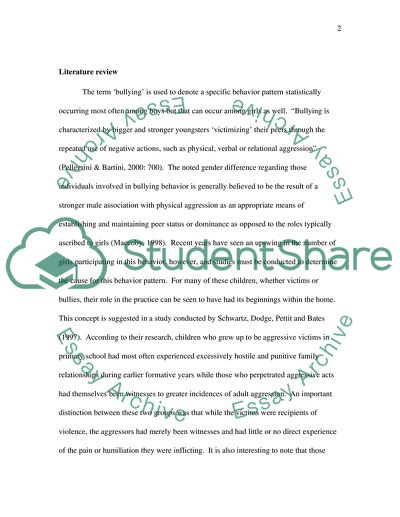Cite this document
(“Bullying in Schools Essay Example | Topics and Well Written Essays - 3000 words”, n.d.)
Bullying in Schools Essay Example | Topics and Well Written Essays - 3000 words. Retrieved from https://studentshare.org/social-science/1542556-bullying-in-schools
Bullying in Schools Essay Example | Topics and Well Written Essays - 3000 words. Retrieved from https://studentshare.org/social-science/1542556-bullying-in-schools
(Bullying in Schools Essay Example | Topics and Well Written Essays - 3000 Words)
Bullying in Schools Essay Example | Topics and Well Written Essays - 3000 Words. https://studentshare.org/social-science/1542556-bullying-in-schools.
Bullying in Schools Essay Example | Topics and Well Written Essays - 3000 Words. https://studentshare.org/social-science/1542556-bullying-in-schools.
“Bullying in Schools Essay Example | Topics and Well Written Essays - 3000 Words”, n.d. https://studentshare.org/social-science/1542556-bullying-in-schools.


